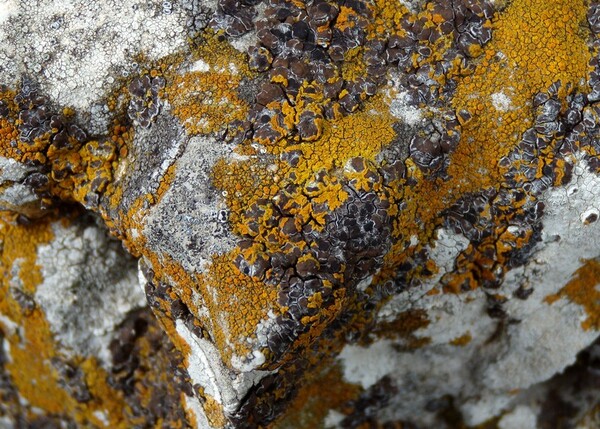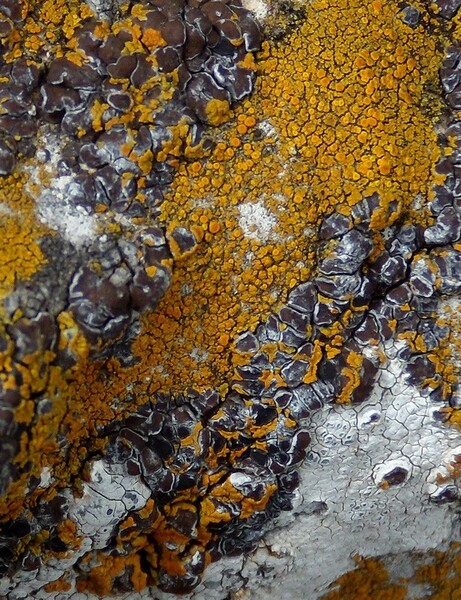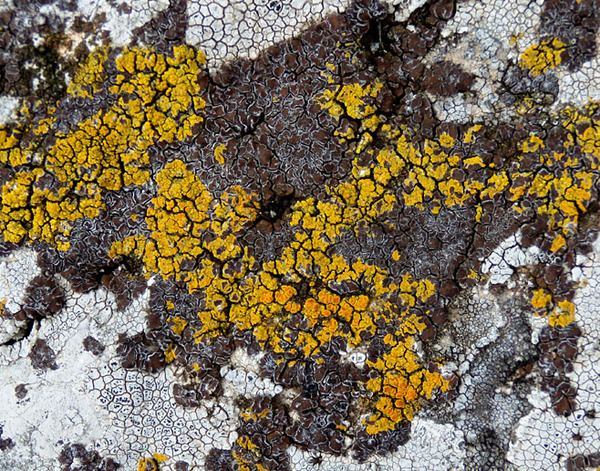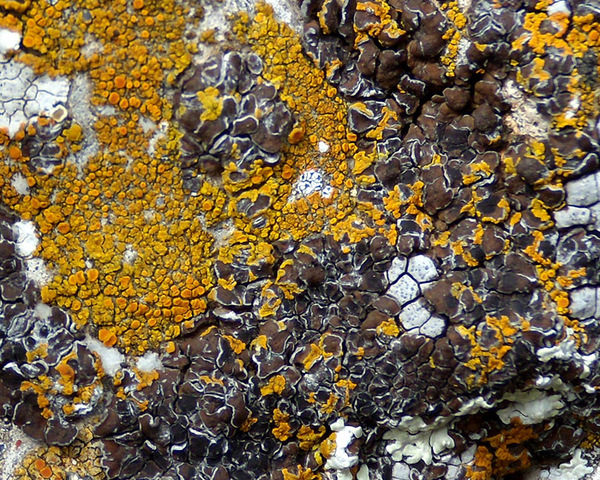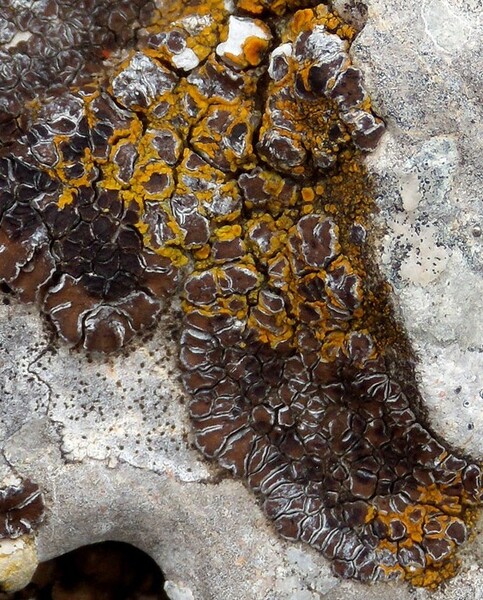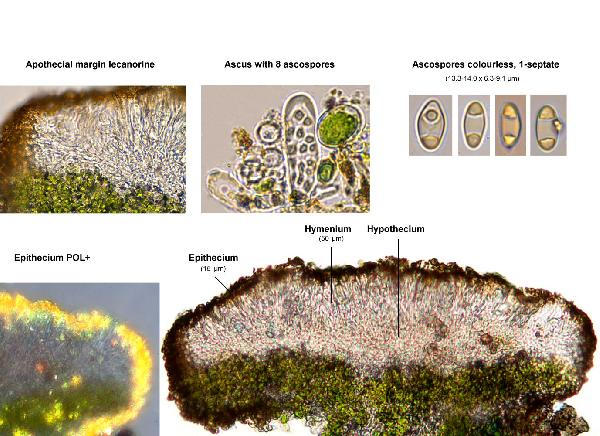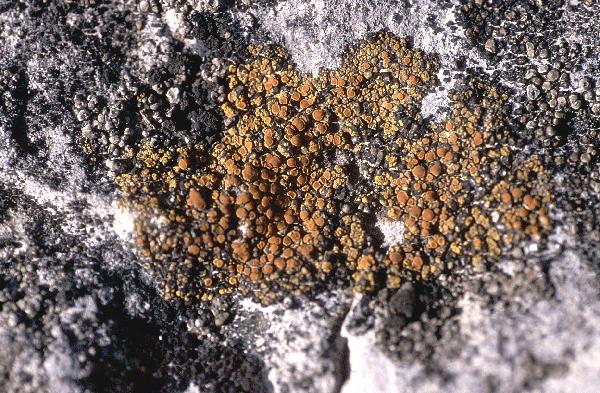Athallia inconnexa (Nyl.) S.Y. Kondr. & Lőkös
in Kondratyuk &. al., Acta Bot. Hung. 60, 3-4: 383, 2018.. Basionym: Lecanora inconnexa Nyl. - Flora, 66: 100, 1883
Synonyms: Caloplaca inconnexa (Nyl.) Zahlbr.; Caloplaca percrocata var. parasitica Jatta; Caloplaca tenuatula (Nyl.) Zahlbr. subsp. inconnexa (Nyl.) Clauzade & Cl. Roux
Distribution: N - VG (Castello 2002, Martellos & Castello 2004), Frl (Nimis & Salvadori 1998, Nascimbene & al. 2009b), Ven, TAA (Spitale & Nascimbene 2012), Lomb, Piem, VA Matteucci & al. 2008c), Emil (Fariselli & al. 2020), Lig (Valcuvia & al. 2000, Giordani & al. 2016). C - Tosc, Marc (Nimis & Tretiach 1999), Umb (Nimis & Tretiach 1999, Ravera & al. 2006), Laz (Bartoli & al. 1998, Nimis & Tretiach 2004), Abr (Nimis & Tretiach 1999, Gheza & al. 2021), Mol (Nimis & Tretiach, 1999, 2004, Caporale & al. 2008, Ravera & al. 2009, Genovesi & Ravera 2014), Sar (Rizzi & al. 2011, Neuwirth 2018, Brackel & Berger 2019). S - Camp (Garofalo & al. 1999, 2010, Aprile & al. 2003, 2003b, Nimis & Tretiach 2004), Pugl (Nimis & Tretiach, 1999, 2001), Bas (Nimis & Tretiach 1999), Cal (Puntillo 1996), Si (Nimis & al. 1994, 1996b, Ottonello & al. 1994, Ottonello 1996, Poli & al. 1997, Grillo 1998, Caniglia & Grillo 2001, 2005, 2006, Grillo & al. 2002, Grillo & Caniglia 2004, Brackel 2008b, 2008c, Grillo & al. 2009, Gianguzzi & al. 2009, Liistro & Cataldo 2011).
Description: Thallus crustose, yellow to (more rarely) orange yellow, starting the life-cycle on different calcicolous lichens, from granulose to irregularly areolate, often slightly lobulate at margins, forming well-delimited, to 1 cm wide, round patches, but most often forming very irregular patches, several thalli often coalescing. Cortex paraplectenchymatous, orange brown in outer part, colourless in inner part, the pigmented parts K+ red, of thin-walled cells; medulla poorly developed, I-. Apothecia frequent, zeorine, immersed when young but soon sessile, 0.3-0.7(-1) mm across, with a flat to slightly convex, yellow to yellow-orange disc and a somewhat paler, persistent margin. Epithecium orange, with orange-brown crystals soluble in K, 10-15 μm high, K+ purple-red, C-; hymenium colourless, 60-85 μm high; paraphyses mostly unbranched, c. 1.5-2.5 μm thick at mid-level, the apical cells up to 7 μm wide. Asci 8-spored, cylindrical-clavate, functionally unitunicate, apically thickened with a broad internal beak, the inner part of apex and external cap I+ blue, Teloschistes-type. Ascospores 2-celled, polarilocular, hyaline, ellipsoid, 10-13(-14) x 6-8 μm, the equatorial thickening (“septum”) 3-5(-8) μm,1/3-1/2 of spore length. Photobiont: chlorococcoid. Spot tests: thallus and apothecia K+ purple-red, C-, KC-, P-. Chemistry: thallus and apothecia with parietin (major), fallacinal, emodin, teloschistin and parietinic acid (minor), corresponding with chemosyndrome A of Søchting (1997).Note: a mild-temperate species found on the top of isolated calcareous boulders and rock outcrops, on calcareous rocks wetted by rain in sunny situations, especially common on Acarospora cervina and Circinaria calcarea. The species, as currently understood, probably belongs to Athallia, but the poorly developed type material probably belongs in Variospora (Vondrák & al. 2016), so that the nomenclature of this lichen is likely to change in the near future. The relationships with A. necator still remain to be clarified.
Growth form: Crustose placodiomorph
Substrata: rocks
Photobiont: green algae other than Trentepohlia
Reproductive strategy: mainly sexual
paras crustose lichens
Commonnes-rarity: (info)
Alpine belt: absent
Subalpine belt: very rare
Oromediterranean belt: rather rare
Montane belt: common
Submediterranean belt: extremely common
Padanian area: rare
Humid submediterranean belt: extremely common
Humid mediterranean belt: very common
Dry mediterranean belt: rather rare
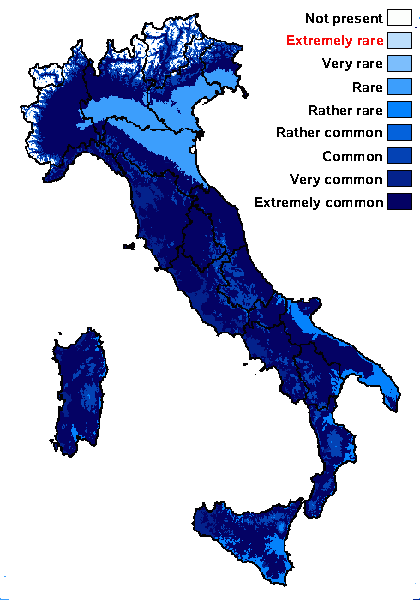
Predictive model
Herbarium samples


P.L. Nimis; Owner: Department of Life Sciences, University of Trieste
Herbarium: TSB (32430)
2001/11/13
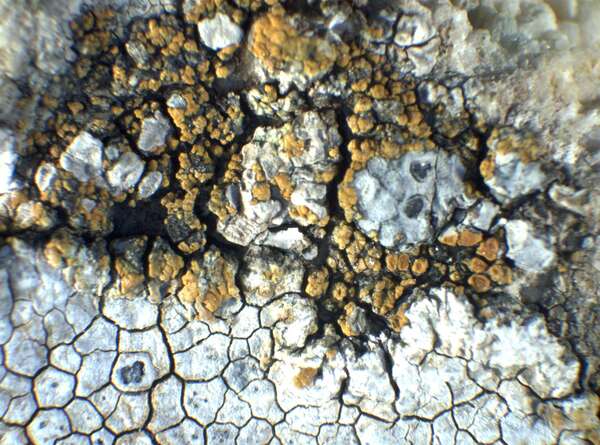

P.L. Nimis; Owner: Department of Life Sciences, University of Trieste
Herbarium: TSB (8778)
2001/11/13
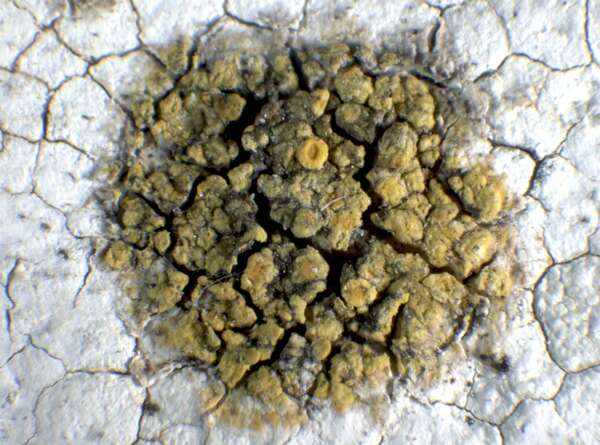

P.L. Nimis; Owner: Department of Life Sciences, University of Trieste
Herbarium: TSB (32430)
2001/11/13
young thallus on the host, Aspicilia sp.
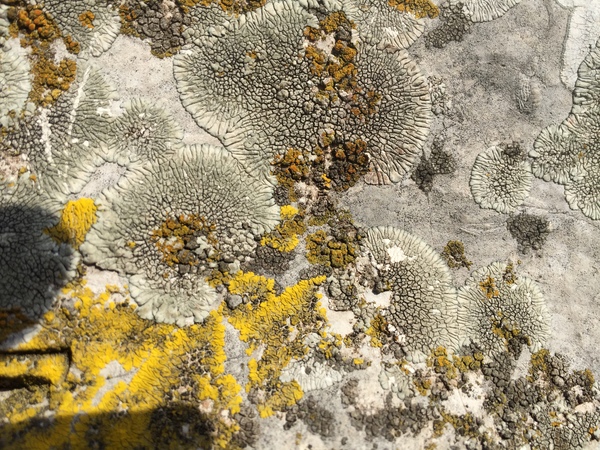

Pier Luigi Nimis; Owner: Department of Life Sciences, University of Trieste
Italy, Friuli Venezia Giulia, Trieste, Trieste Karst, Val Rosandra, San Lorenzo near Belvedere
11/02/2017
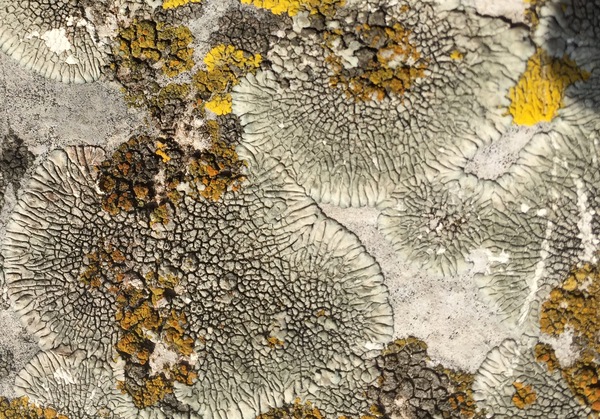

Pier Luigi Nimis; Owner: Department of Life Sciences, University of Trieste
Italy, Friuli Venezia Giulia, Trieste, Trieste Karst, Val Rosandra, San Lorenzo near Belvedere
11/02/2017


Pier Luigi Nimis; Owner: Department of Life Sciences, University of Trieste
Italy, Friuli Venezia Giulia, Trieste, Trieste Karst, Val Rosandra, San Lorenzo near Belvedere
11/02/2017
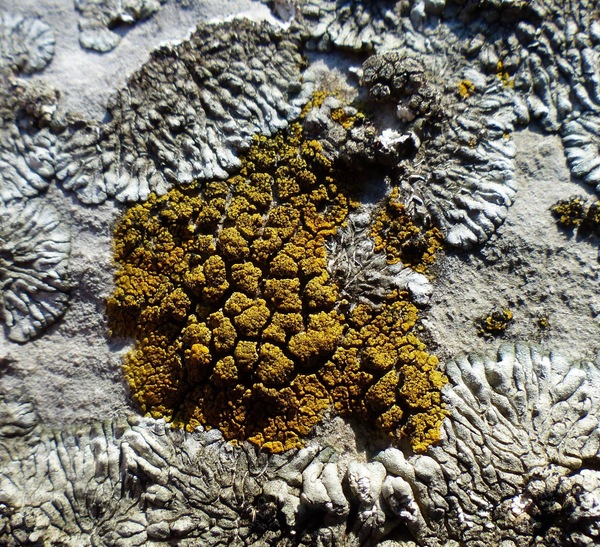

Andrea Moro; Owner: Department of Life Sciences, University of Trieste
italy, Friuli Venezia Giulia, Trieste, Trieste Karst near Borgo Grotta Gigante
16/02/2017
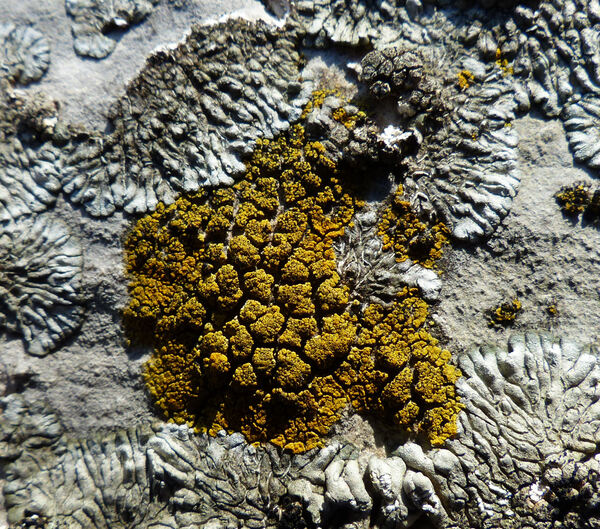

Andrea Moro; Owner: Department of Life Sciences, University of Trieste
Italy, Friuli Venezia Giulia, Trieste, Trieste Karst near Borgo Grotta Gigante
16/02/2017


Felix Schumm CC BY-SA 4.0
[13224], Germany, Baden-Württemberg, Ostalbkreis, Rosensteingebiet bei Heubach, Kalkfelsen im Buchenwald beim „Finsteren Loch“. 48°47,566’ N, 9°57,829’ E, 670 m. Leg. Schumm, 21.05.2007


Felix Schumm CC BY-SA 4.0
[13224], Germany, Baden-Württemberg, Ostalbkreis, Rosensteingebiet bei Heubach, Kalkfelsen im Buchenwald beim „Finsteren Loch“. 48°47,566’ N, 9°57,829’ E, 670 m. Leg. Schumm, 21.05.2007
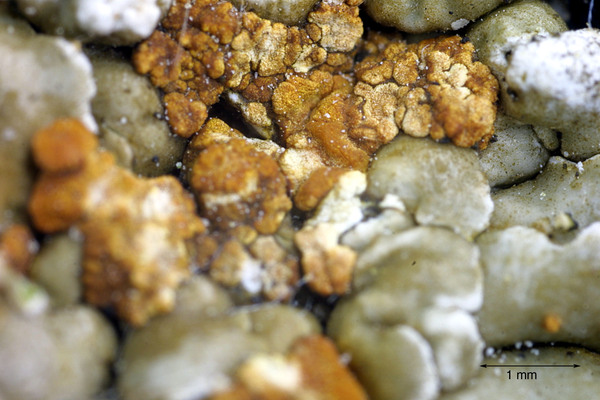

Felix Schumm CC BY-SA 4.0
[13224], Germany, Baden-Württemberg, Ostalbkreis, Rosensteingebiet bei Heubach, Kalkfelsen im Buchenwald beim „Finsteren Loch“. 48°47,566’ N, 9°57,829’ E, 670 m. Leg. Schumm, 21.05.2007
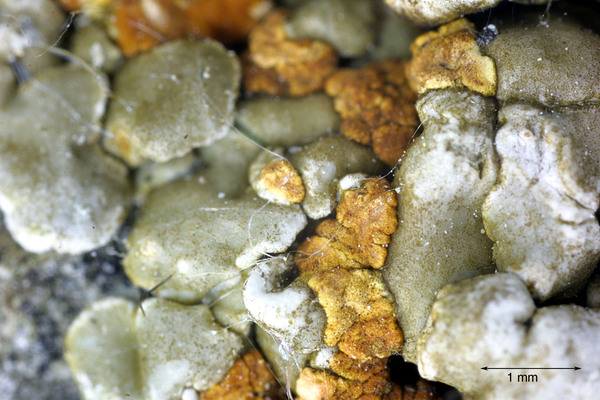

Felix Schumm CC BY-SA 4.0
[13224], Germany, Baden-Württemberg, Ostalbkreis, Rosensteingebiet bei Heubach, Kalkfelsen im Buchenwald beim „Finsteren Loch“. 48°47,566’ N, 9°57,829’ E, 670 m. Leg. Schumm, 21.05.2007


Felix Schumm CC BY-SA 4.0
[13224], Germany, Baden-Württemberg, Ostalbkreis, Rosensteingebiet bei Heubach, Kalkfelsen im Buchenwald beim „Finsteren Loch“. 48°47,566’ N, 9°57,829’ E, 670 m. Leg. Schumm, 21.05.2007
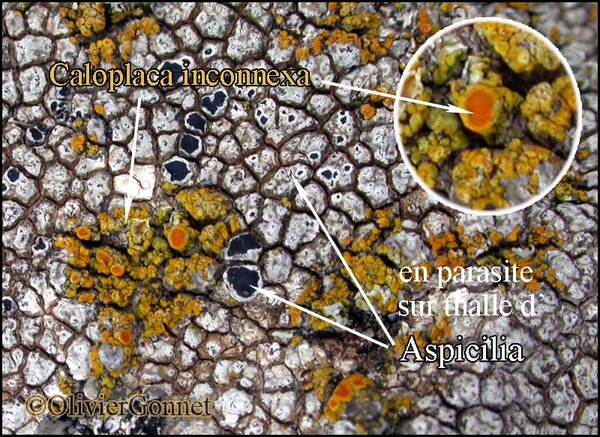
Courtesy Danièle et Olivier Gonnet - Source: https://www.afl-lichenologie.fr/Photos_AFL/Photos_AFL_A/Textes_A4/Athallia_inconnexa.htm
France, sur Aspicilia calcarea - session AFL 2005 - Lozère
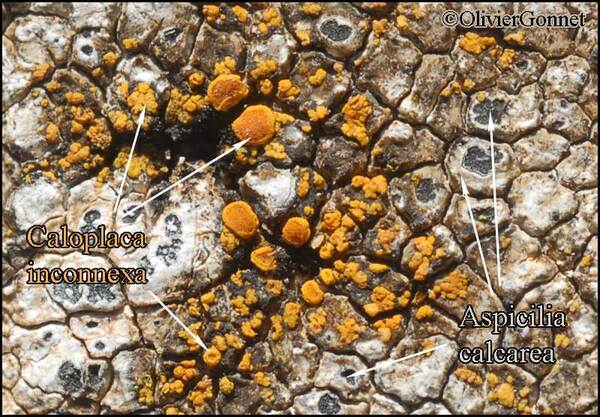
Courtesy Danièle et Olivier Gonnet - Source: https://www.afl-lichenologie.fr/Photos_AFL/Photos_AFL_A/Textes_A4/Athallia_inconnexa.htm
France, sur Aspicilia calcarea - session AFL 2005 - Lozère
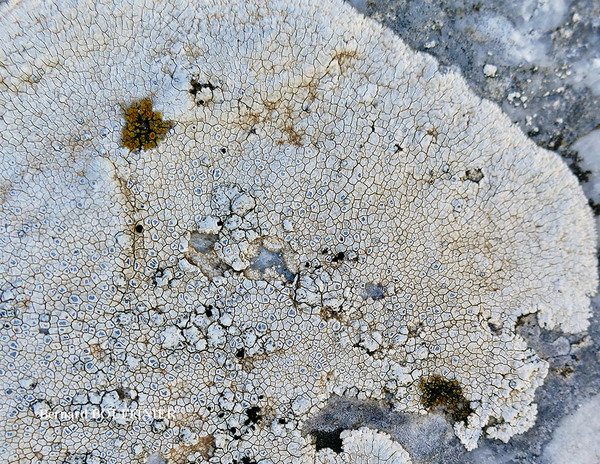
Bernard Bouffinier - Source: http://www.lichensmaritimes.org/index.php?task=fiche&lichen=930&lang=en
France, sur Aspicilia calcarea Corse Barbaggio
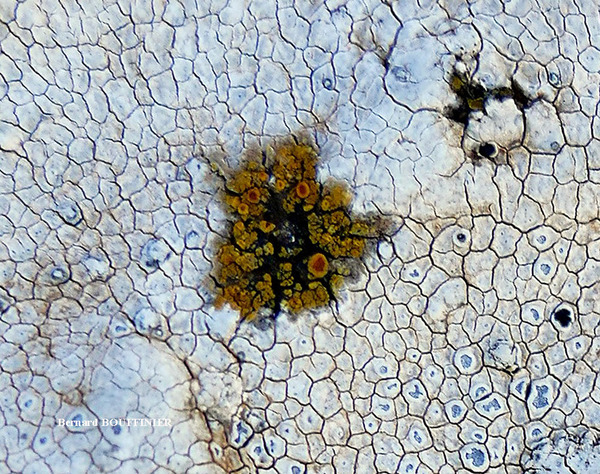
Bernard Bouffinier - Source: http://www.lichensmaritimes.org/index.php?task=fiche&lichen=930&lang=en
France, sur Aspicilia calcarea Corse Barbaggio
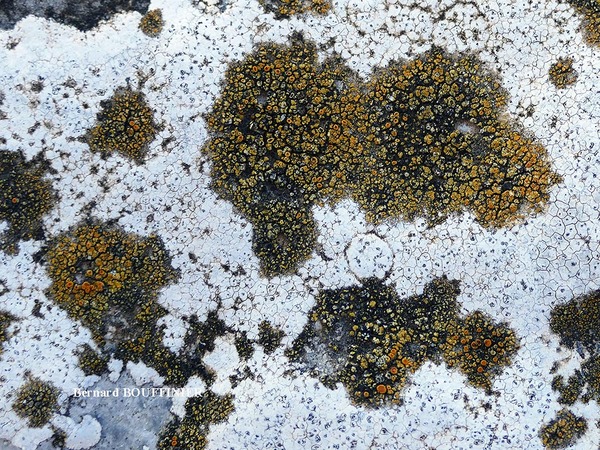
Bernard Bouffinier - Source: http://www.lichensmaritimes.org/index.php?task=fiche&lichen=930&lang=en
France, sur Aspicilia calcarea Corse Barbaggio

Bernard Bouffinier - Source: http://www.lichensmaritimes.org/index.php?task=fiche&lichen=930&lang=en
France, sur Aspicilia calcarea Corse Barbaggio
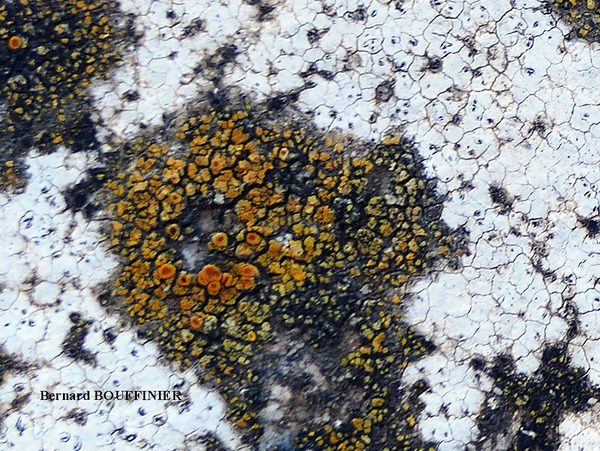
Bernard Bouffinier - Source: http://www.lichensmaritimes.org/index.php?task=fiche&lichen=930&lang=en
France, sur Aspicilia calcarea Corse Barbaggio
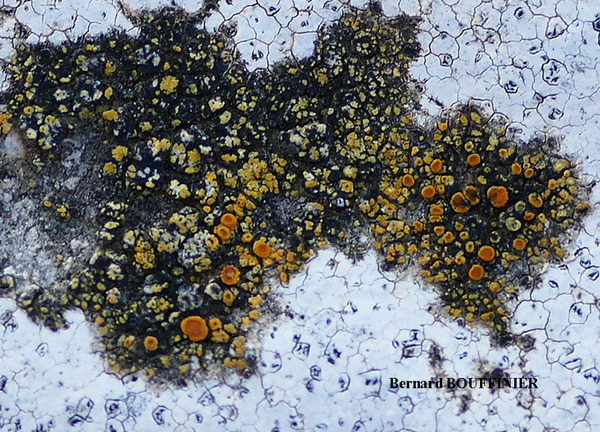
Bernard Bouffinier - Source: http://www.lichensmaritimes.org/index.php?task=fiche&lichen=930&lang=en
France, sur Aspicilia calcarea Corse Barbaggio
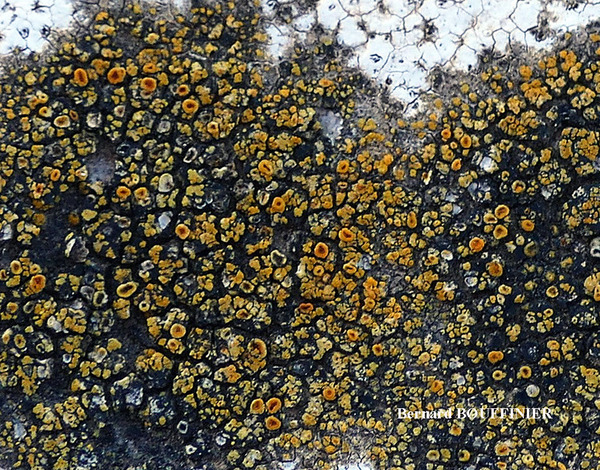
Bernard Bouffinier - Source: http://www.lichensmaritimes.org/index.php?task=fiche&lichen=930&lang=en
France, sur Aspicilia calcarea Corse Barbaggio
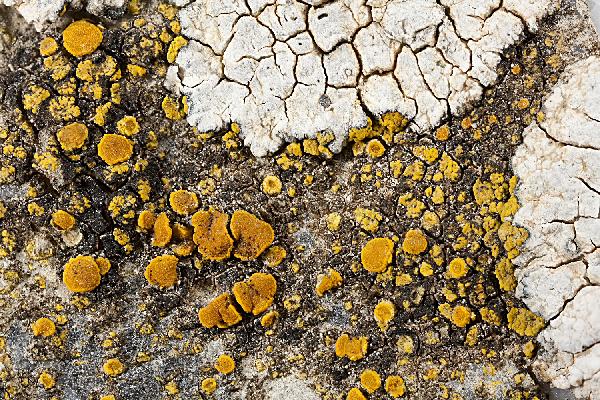
Ulrich Kirschbaum CC BY-SA 4.0 - Source: https://www.thm.de/lse/ulrich-kirschbaum/flechtenbilder
SSE-Europe; N-Cyprus; SE of Girne; Beşparmak Mountains; Buffavento Castle (and surroundings); 3. on limestone, parasitic on Circinaria sp.
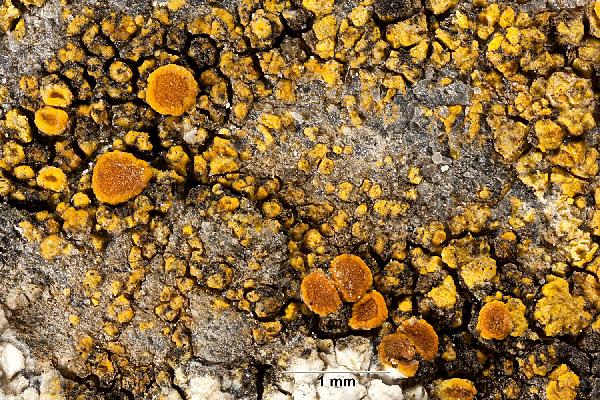
Ulrich Kirschbaum CC BY-SA 4.0 - Source: https://www.thm.de/lse/ulrich-kirschbaum/flechtenbilder
SSE-Europe; N-Cyprus; SE of Girne; Beşparmak Mountains; Buffavento Castle (and surroundings); 3. on limestone, parasitic on Circinaria sp.
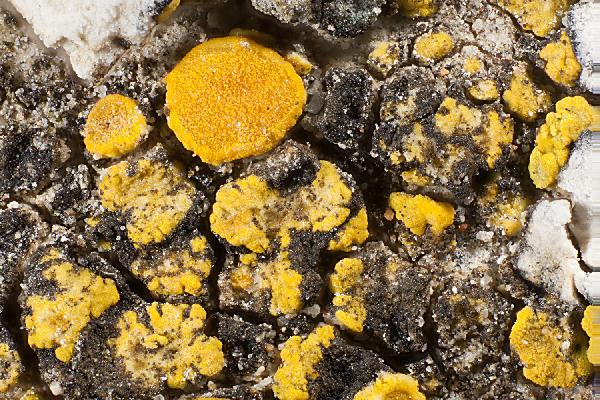
Ulrich Kirschbaum CC BY-SA 4.0 - Source: https://www.thm.de/lse/ulrich-kirschbaum/flechtenbilder
SSE-Europe; N-Cyprus; SE of Girne; Beşparmak Mountains; Buffavento Castle (and surroundings); 3. on limestone, parasitic on Circinaria sp.
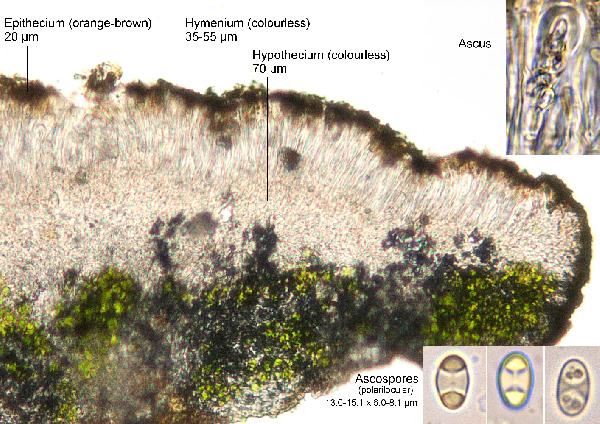
Ulrich Kirschbaum CC BY-SA 4.0 - Source: https://www.thm.de/lse/ulrich-kirschbaum/flechtenbilder
SSE-Europe; N-Cyprus; SE of Girne; Beşparmak Mountains; Buffavento Castle (and surroundings); 3. on limestone, parasitic on Circinaria sp.
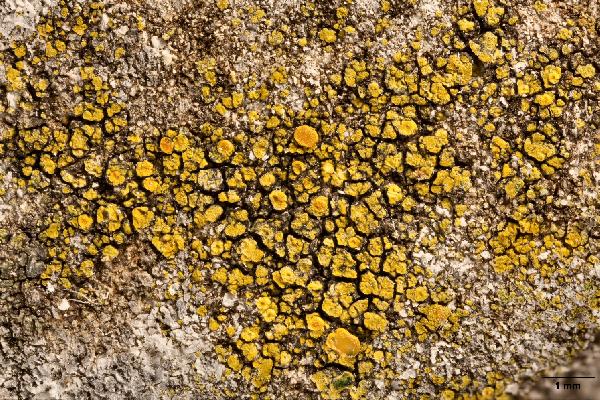
Ulrich Kirschbaum CC BY-SA 4.0 - Source: https://www.thm.de/lse/ulrich-kirschbaum/flechtenbilder
On limestone.
SE Europe; N-Cyprus; SE of Girne; Beşparmak Mountains; between Alevkaya and Antiphonitis Monastery; 8.
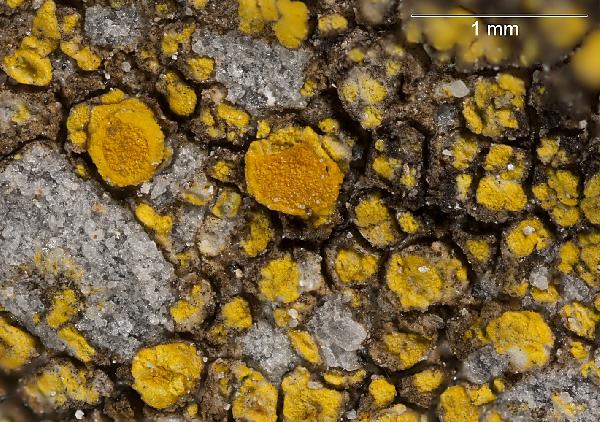
Ulrich Kirschbaum CC BY-SA 4.0 - Source: https://www.thm.de/lse/ulrich-kirschbaum/flechtenbilder
On limestone.
SE Europe; N-Cyprus; SE of Girne; Beşparmak Mountains; between Alevkaya and Antiphonitis Monastery; 8.

Ulrich Kirschbaum CC BY-SA 4.0 - Source: https://www.thm.de/lse/ulrich-kirschbaum/flechtenbilder
On limestone.
SE Europe; N-Cyprus; SE of Girne; Beşparmak Mountains; between Alevkaya and Antiphonitis Monastery; 8.
Growth form: Crustose placodiomorph
Substrata: rocks
Photobiont: green algae other than Trentepohlia
Reproductive strategy: mainly sexual
paras crustose lichens
Commonnes-rarity: (info)
Alpine belt: absent
Subalpine belt: very rare
Oromediterranean belt: rather rare
Montane belt: common
Submediterranean belt: extremely common
Padanian area: rare
Humid submediterranean belt: extremely common
Humid mediterranean belt: very common
Dry mediterranean belt: rather rare

Predictive model
| Herbarium samples |


P.L. Nimis; Owner: Department of Life Sciences, University of Trieste
Herbarium: TSB (32430)
2001/11/13


P.L. Nimis; Owner: Department of Life Sciences, University of Trieste
Herbarium: TSB (8778)
2001/11/13


P.L. Nimis; Owner: Department of Life Sciences, University of Trieste
Herbarium: TSB (32430)
2001/11/13
young thallus on the host, Aspicilia sp.


Pier Luigi Nimis; Owner: Department of Life Sciences, University of Trieste
Italy, Friuli Venezia Giulia, Trieste, Trieste Karst, Val Rosandra, San Lorenzo near Belvedere
11/02/2017


Pier Luigi Nimis; Owner: Department of Life Sciences, University of Trieste
Italy, Friuli Venezia Giulia, Trieste, Trieste Karst, Val Rosandra, San Lorenzo near Belvedere
11/02/2017


Pier Luigi Nimis; Owner: Department of Life Sciences, University of Trieste
Italy, Friuli Venezia Giulia, Trieste, Trieste Karst, Val Rosandra, San Lorenzo near Belvedere
11/02/2017


Andrea Moro; Owner: Department of Life Sciences, University of Trieste
italy, Friuli Venezia Giulia, Trieste, Trieste Karst near Borgo Grotta Gigante
16/02/2017


Andrea Moro; Owner: Department of Life Sciences, University of Trieste
Italy, Friuli Venezia Giulia, Trieste, Trieste Karst near Borgo Grotta Gigante
16/02/2017


Felix Schumm CC BY-SA 4.0
[13224], Germany, Baden-Württemberg, Ostalbkreis, Rosensteingebiet bei Heubach, Kalkfelsen im Buchenwald beim „Finsteren Loch“. 48°47,566’ N, 9°57,829’ E, 670 m. Leg. Schumm, 21.05.2007


Felix Schumm CC BY-SA 4.0
[13224], Germany, Baden-Württemberg, Ostalbkreis, Rosensteingebiet bei Heubach, Kalkfelsen im Buchenwald beim „Finsteren Loch“. 48°47,566’ N, 9°57,829’ E, 670 m. Leg. Schumm, 21.05.2007


Felix Schumm CC BY-SA 4.0
[13224], Germany, Baden-Württemberg, Ostalbkreis, Rosensteingebiet bei Heubach, Kalkfelsen im Buchenwald beim „Finsteren Loch“. 48°47,566’ N, 9°57,829’ E, 670 m. Leg. Schumm, 21.05.2007


Felix Schumm CC BY-SA 4.0
[13224], Germany, Baden-Württemberg, Ostalbkreis, Rosensteingebiet bei Heubach, Kalkfelsen im Buchenwald beim „Finsteren Loch“. 48°47,566’ N, 9°57,829’ E, 670 m. Leg. Schumm, 21.05.2007


Felix Schumm CC BY-SA 4.0
[13224], Germany, Baden-Württemberg, Ostalbkreis, Rosensteingebiet bei Heubach, Kalkfelsen im Buchenwald beim „Finsteren Loch“. 48°47,566’ N, 9°57,829’ E, 670 m. Leg. Schumm, 21.05.2007

Courtesy Danièle et Olivier Gonnet - Source: https://www.afl-lichenologie.fr/Photos_AFL/Photos_AFL_A/Textes_A4/Athallia_inconnexa.htm
France, sur Aspicilia calcarea - session AFL 2005 - Lozère

Courtesy Danièle et Olivier Gonnet - Source: https://www.afl-lichenologie.fr/Photos_AFL/Photos_AFL_A/Textes_A4/Athallia_inconnexa.htm
France, sur Aspicilia calcarea - session AFL 2005 - Lozère

Bernard Bouffinier - Source: http://www.lichensmaritimes.org/index.php?task=fiche&lichen=930&lang=en
France, sur Aspicilia calcarea Corse Barbaggio

Bernard Bouffinier - Source: http://www.lichensmaritimes.org/index.php?task=fiche&lichen=930&lang=en
France, sur Aspicilia calcarea Corse Barbaggio

Bernard Bouffinier - Source: http://www.lichensmaritimes.org/index.php?task=fiche&lichen=930&lang=en
France, sur Aspicilia calcarea Corse Barbaggio

Bernard Bouffinier - Source: http://www.lichensmaritimes.org/index.php?task=fiche&lichen=930&lang=en
France, sur Aspicilia calcarea Corse Barbaggio

Bernard Bouffinier - Source: http://www.lichensmaritimes.org/index.php?task=fiche&lichen=930&lang=en
France, sur Aspicilia calcarea Corse Barbaggio

Bernard Bouffinier - Source: http://www.lichensmaritimes.org/index.php?task=fiche&lichen=930&lang=en
France, sur Aspicilia calcarea Corse Barbaggio

Bernard Bouffinier - Source: http://www.lichensmaritimes.org/index.php?task=fiche&lichen=930&lang=en
France, sur Aspicilia calcarea Corse Barbaggio

Ulrich Kirschbaum CC BY-SA 4.0 - Source: https://www.thm.de/lse/ulrich-kirschbaum/flechtenbilder
SSE-Europe; N-Cyprus; SE of Girne; Beşparmak Mountains; Buffavento Castle (and surroundings); 3. on limestone, parasitic on Circinaria sp.

Ulrich Kirschbaum CC BY-SA 4.0 - Source: https://www.thm.de/lse/ulrich-kirschbaum/flechtenbilder
SSE-Europe; N-Cyprus; SE of Girne; Beşparmak Mountains; Buffavento Castle (and surroundings); 3. on limestone, parasitic on Circinaria sp.

Ulrich Kirschbaum CC BY-SA 4.0 - Source: https://www.thm.de/lse/ulrich-kirschbaum/flechtenbilder
SSE-Europe; N-Cyprus; SE of Girne; Beşparmak Mountains; Buffavento Castle (and surroundings); 3. on limestone, parasitic on Circinaria sp.

Ulrich Kirschbaum CC BY-SA 4.0 - Source: https://www.thm.de/lse/ulrich-kirschbaum/flechtenbilder
SSE-Europe; N-Cyprus; SE of Girne; Beşparmak Mountains; Buffavento Castle (and surroundings); 3. on limestone, parasitic on Circinaria sp.

Ulrich Kirschbaum CC BY-SA 4.0 - Source: https://www.thm.de/lse/ulrich-kirschbaum/flechtenbilder
On limestone. SE Europe; N-Cyprus; SE of Girne; Beşparmak Mountains; between Alevkaya and Antiphonitis Monastery; 8.

Ulrich Kirschbaum CC BY-SA 4.0 - Source: https://www.thm.de/lse/ulrich-kirschbaum/flechtenbilder
On limestone. SE Europe; N-Cyprus; SE of Girne; Beşparmak Mountains; between Alevkaya and Antiphonitis Monastery; 8.

 INDEX FUNGORUM
INDEX FUNGORUM
 GBIF
GBIF
 DOLICHENS
DOLICHENS
